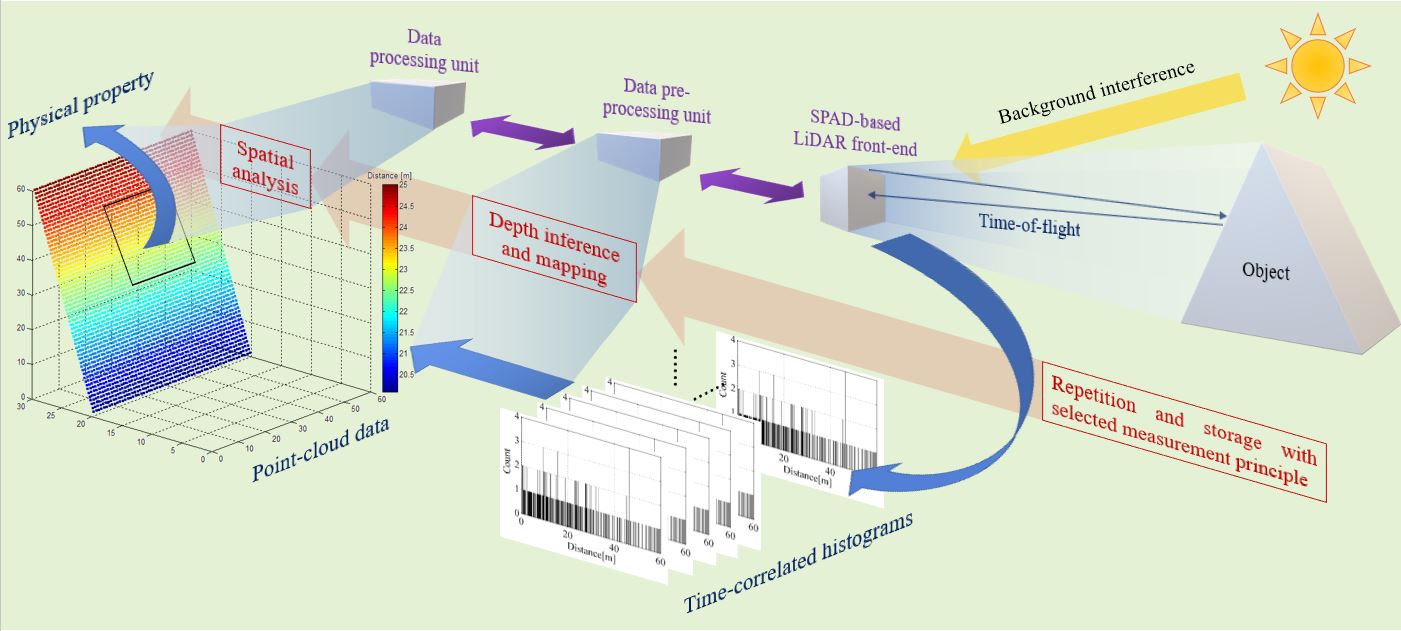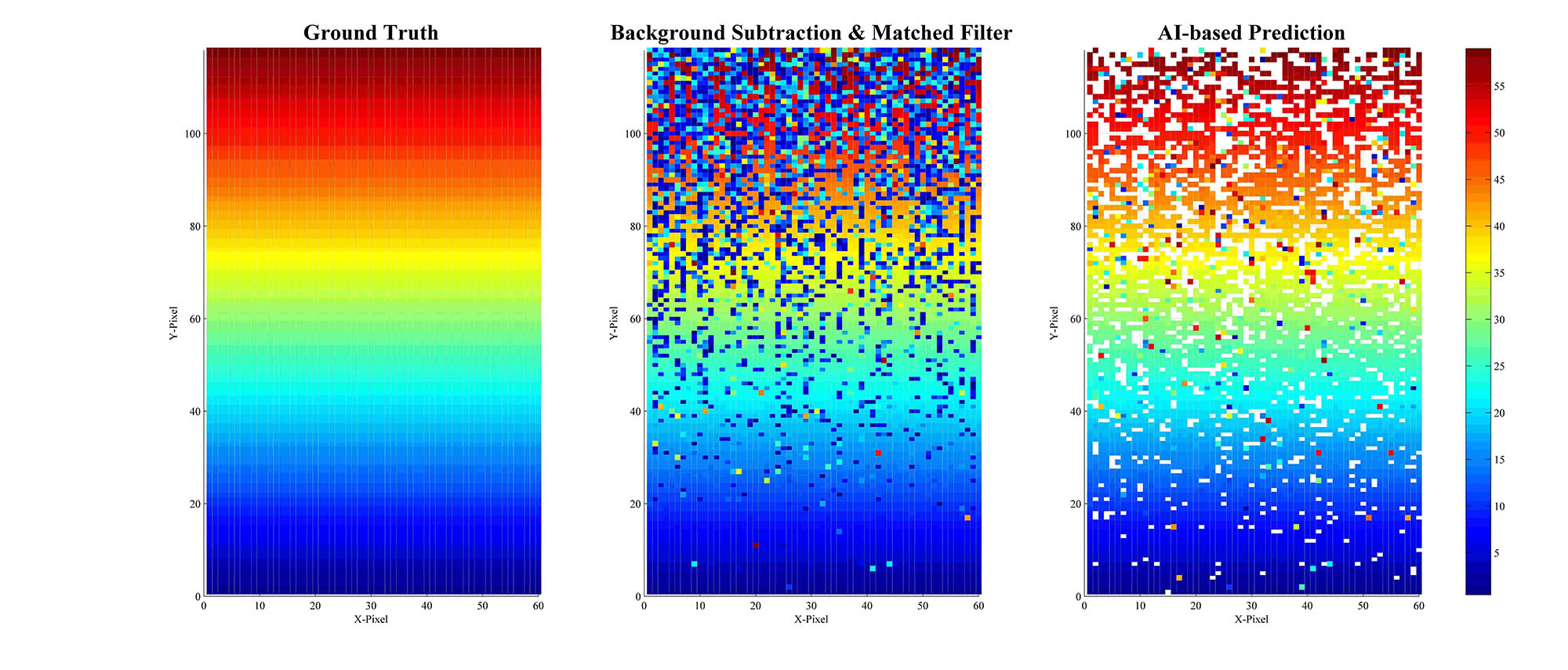Sensors are one of the most important components in today‘s digital world. Just like the human senses, sensors are the means by which technical systems acquire information about the external processes and situations. However, raw sensor data are not noise-and disturbance-free. Raw sensor data contain a large amount of noise and distortion, posing a challenge to obtain useful information. Processing the raw data in the sensor itself turns it into a smart sensor.
An example of a complex smart sensor is the SPAD-based flash LiDAR system. As shown in figure 1 the distance information is represented by the point cloud data. However, the time-correlated histograms, which are used to infer the point cloud data, contain 90 % of noise. Classical analysis methods such as digital filters are inefficient and significantly degraded by the dominated noise. Feature extraction, introduced as the first processing stage by the machine learning algorithm, is one way to overcome the processing inefficiency and reduce the influence of irrelevant information. Typically, the feature extraction belongs to the black-box model and will be automatically learned during the training procedure. However, in many machine learning algorithms, e.g. convolutional neural network, the scale and the complexity of the feature extraction can be greater than the classification algorithm itself.
Fraunhofer IMS is developing lightweight feature extraction methods for different applications. Taking LiDAR histogram data as an example the feature extraction is governed by statistics. By providing the corresponding parameters, e.g. laser pulse width, desired operation range of the background light intensity and number of measurements per histogram, we can optimize the feature extraction for your system, so that even a small machine learning algorithm can be utilized on the extracted features and a robust distance information can be obtained. The aforementioned feature extraction is applied on the measurement dataset from the Fraunhofer IMS LiDAR system called “OWL” and the simulation result is qualitatively shown in figure 2. One can see from the greater similarity of the AI-based plot (right) to the ideal plot (left) that the AI-based method is significantly better than the conventional method (center) and produces fewer outliers.
Fraunhofer IMS provides the following possibilities to improve your LiDAR measurements:
- Customized feature extraction method to improve the measurement robustness under high ambient light
- Classification algorithms selection and evaluation (SVM, neural network, Bayesian theory, or decision tree)
- Real-time measurement quality analysis
- Time-correlated single-pixel correction and macro-pixel-based spatial correction


